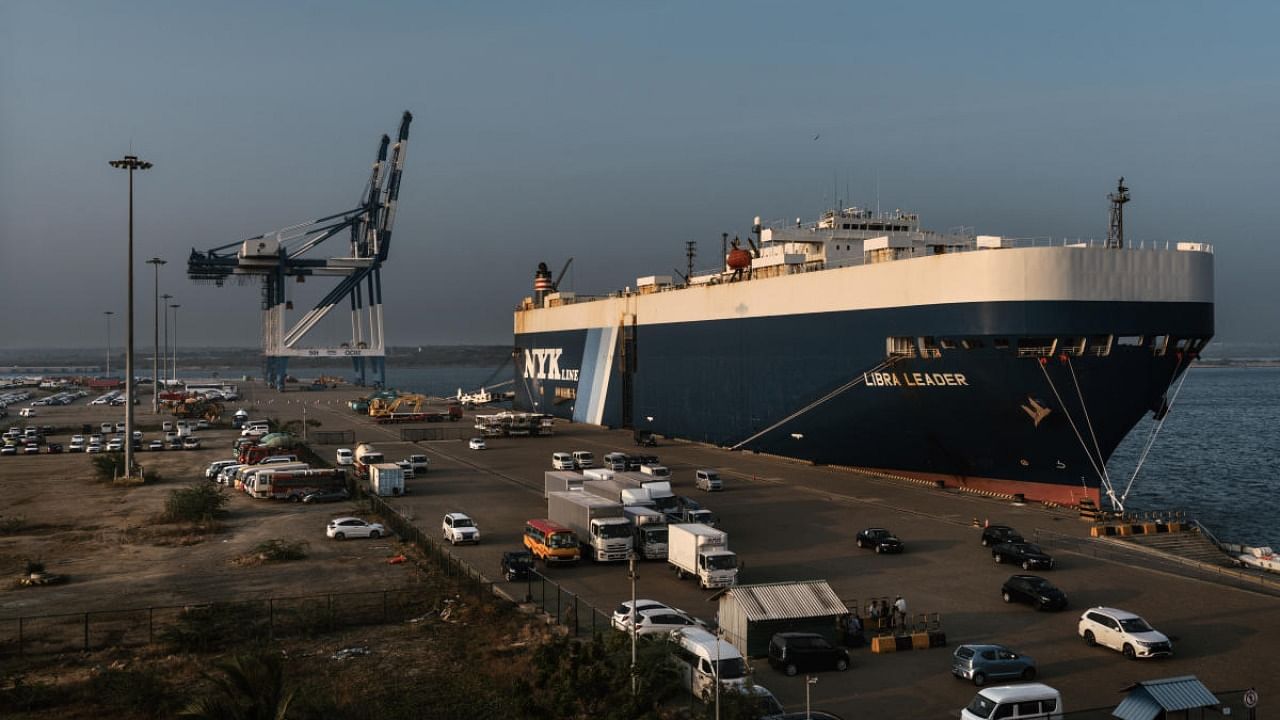
Even as China’s recon ship ‘Yuan Wang 5’ is back on course towards the Hambantota Port of Sri Lanka, India is set to gift the island nation a Dornier 228 maritime patrol aircraft soon, subtly reasserting its role as the net security provider to the Indian Ocean region.
The ‘Yuan Wang 5’ is now likely to dock at Hambantota Port on August 16 – five days after it was originally scheduled to arrive at the port Sri Lanka leased out to China Merchant Ports, a state-owned company of the communist country, in 2016.
“Security and cooperation in the neighbourhood are of utmost priority,” the Ministry of Foreign Affairs of the Sri Lankan government said in a statement in Colombo on Saturday, after giving its nod for the arrival of the ship in Hambantota Port. “It is Sri Lanka’s intention to safeguard the legitimate interests of all countries.”
Also Read | Dragon moves in close to southern India
A Pakistan Navy frigate – PNS Taimur – also docked at Colombo Port of Sri Lanka on Friday. Islamabad had requested the Sri Lankan government to allow the warship to have a stopover at Colombo Port for refuelling and replenishment of stocks while returning to Pakistan after participating in drills in Malaysia and Cambodia. Dhaka had earlier denied the frigate – built by China and later handed over to Pakistan – permission to dock at a port in Bangladesh.
A day before China’s Yuan Wang 5 will arrive at the port in Sri Lanka, New Delhi’s diplomatic mission in Colombo may on Monday hand over one of the Dornier 228 maritime aircraft of the Indian Navy to the island nation for two years. New Delhi will replace the used aircraft with a newly-built one two years later and will then discuss with Colombo the modalities for handing over another aircraft to the Sri Lankan Navy or the Coast Guard, sources told DH on Saturday.
India’s move to help Sri Lanka enhance its maritime surveillance capabilities appears to be a subtle move by it to reassert its role as a net security provider for the Indian Ocean, notwithstanding increasing forays by the Chinese People’s Liberation Army Navy and Pakistan Navy in the region.
Colombo had on July 12 granted permission for the visit of China’s ‘Yuan Wang 5’ to Hambantota Port of Sri Lanka.
Also Read | Lankan insensitivity unacceptable
The ship is one of the four currently used by the Strategic Support Force of the Chinese People’s Liberation Army (PLA) to track satellites and intercontinental ballistic missiles.
New Delhi had over the past couple of weeks repeatedly conveyed its concerns over the arrival of the ship in the Indian Ocean nation, The Ministry of Foreign Affairs of the Sri Lankan government had on August 5 written to the Embassy of the People’s Republic of China in Colombo, requesting for postponement of the visit of the ship until further consultations between the two sides.
Beijing had on August 8 dismissed New Delhi’s security concerns as “senseless” and tacitly asked it to desist from “disturbing normal exchanges and cooperation” between China and Sri Lanka. New Delhi hit back, rejecting Beijing’s insinuations about India’s role in making Sri Lanka postpone the visit of the ship. India also pointed out that it was its sovereign right to express its security concerns over the arrival of China’s ship with military capabilities in Sri Lanka.
The Ministry of Foreign Affairs of the Sri Lankan Government stated on Saturday that it had now decided to allow the ship to dock at Hambantota Port for refuelling and replenishing its stock of other essentials from Tuesday to August 22. It claimed that the decision to allow the ship to dock had been taken after “extensive consultations at a high level through diplomatic channels with all parties concerned, with a view to resolving the matter in a spirit of friendship, mutual trust and constructive dialogue, taking into account the interests of all parties concerned, and in line with the principle of sovereign equality of states”.
Colombo on Saturday also underlined the pre-conditions it had set on July 12 while accepting Beijing’s request for permission for the ship to visit the Hambantota Port – keeping the vessel’s Automatic Identification System (AIS) switched on within the Exclusive Economic Zone of Sri Lanka and no scientific research to be conducted by it in Sri Lankan waters.
After Sri Lanka plunged into an economic crisis early this year, India has so far provided assistance worth over US $ 3.8 billion to help the cash-strapped island nation and also sent consignments of food, fuel, medicines, and fertilizers and other essentials.
The PLA navy deployed its 35th Task Force in the Indian Ocean region in April 2020 – just a few days before the military stand-off along the Line of Actual Control (LAC) between India and China in eastern Ladakh had started. China had also deployed a fleet of underwater drones (Unmanned Underwater Vehicles) in the Indian Ocean. The Indian Navy had earlier in September 2019 spotted and chased away China’s research vessel Shiyan 1 in the Exclusive Economic Zone of India near the Andaman and Nicobar islands.
The Chinese PLAN had also deployed submarines in the Indian Ocean, including Shang class Type 093 nuclear-powered ones. Though Beijing publicly said that the deployment was intended to step up patrols on the sea lanes to protect vessels from pirates, New Delhi has been suspicious about the PLA Navy’s moves in the region.
